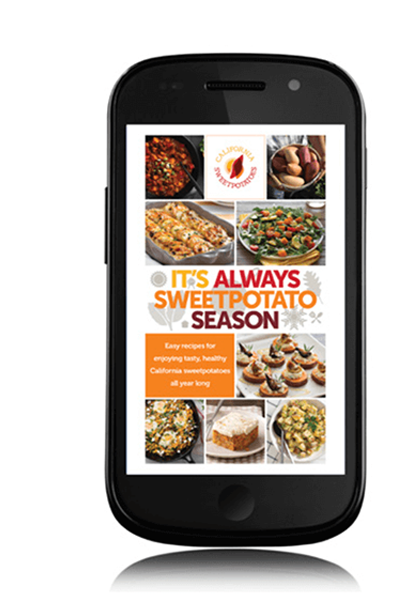Confused about the difference between yams and sweetpotatoes?
Don’t be!
IT’S REALLY VERY SIMPLE IF YOU KNOW THESE THREE FACTS:
The modern, more accurate word for “yam” is “sweetpotato.”
Sweetpotatoes come in many colors—red, orange, white, and purple. All can be used in recipes that call for yams.
Sweetpotatoes are a versatile and delicious superfood available every day of the year!
THE SWEETPOTATO GUIDE
Sweetpotatoes come in many colors—red, orange, white, and even purple. You may see them labeled as “yams” at the grocery store. But the modern, more accurate term is “sweetpotato.” Either can be used in any recipe calling for sweetpotatoes or yams.
True yams do exist, but they are botanically different from sweetpotatoes and are a starchy, tuberous vegetable mostly grown in Africa. It’s unlikely you’ll ever see a true yam at your grocer.
COOKING WITH SWEETPOTATOES
Any recipe that calls for yams can be made with sweetpotatoes. In fact, those candied yams your aunt has brought for the past 20 Thanksgivings have always been made with sweetpotatoes—most likely orange- or red-fleshed types.
But there is a whole world of recipes that can be made with sweetpotatoes! And because sweetpotatoes are available year-round, you can enjoy them any day of the year.
Click here for our sweetpotato recipes. And click here for basic sweetpotato cooking instructions, including baking, grilling, frying, and more.
WHY SWEETPOTATOES ARE A SUPERFOOD
California sweetpotatoes perfectly match the definition of a superfood because they are “a nutrient-rich food considered to be especially beneficial for health and well-being.”
California sweetpotatoes have over 80 nutrients. They’re high in vitamin B6, vitamin A, carotene, and potassium. They’re rich in antioxidant vitamins C and E. And they’re a great source of manganese and dietary fiber.
Source: National Agricultural Library, part of the Agricultural Research Service of the US Department of Agriculture.
Funding for this webpage was made possible by the U.S. Department of Agriculture’s (USDA) Agricultural Marketing Service through grant AM22SCBPCA1133. Its contents are solely the responsibility of the authors and do not necessarily represent the official views of the USDA.





